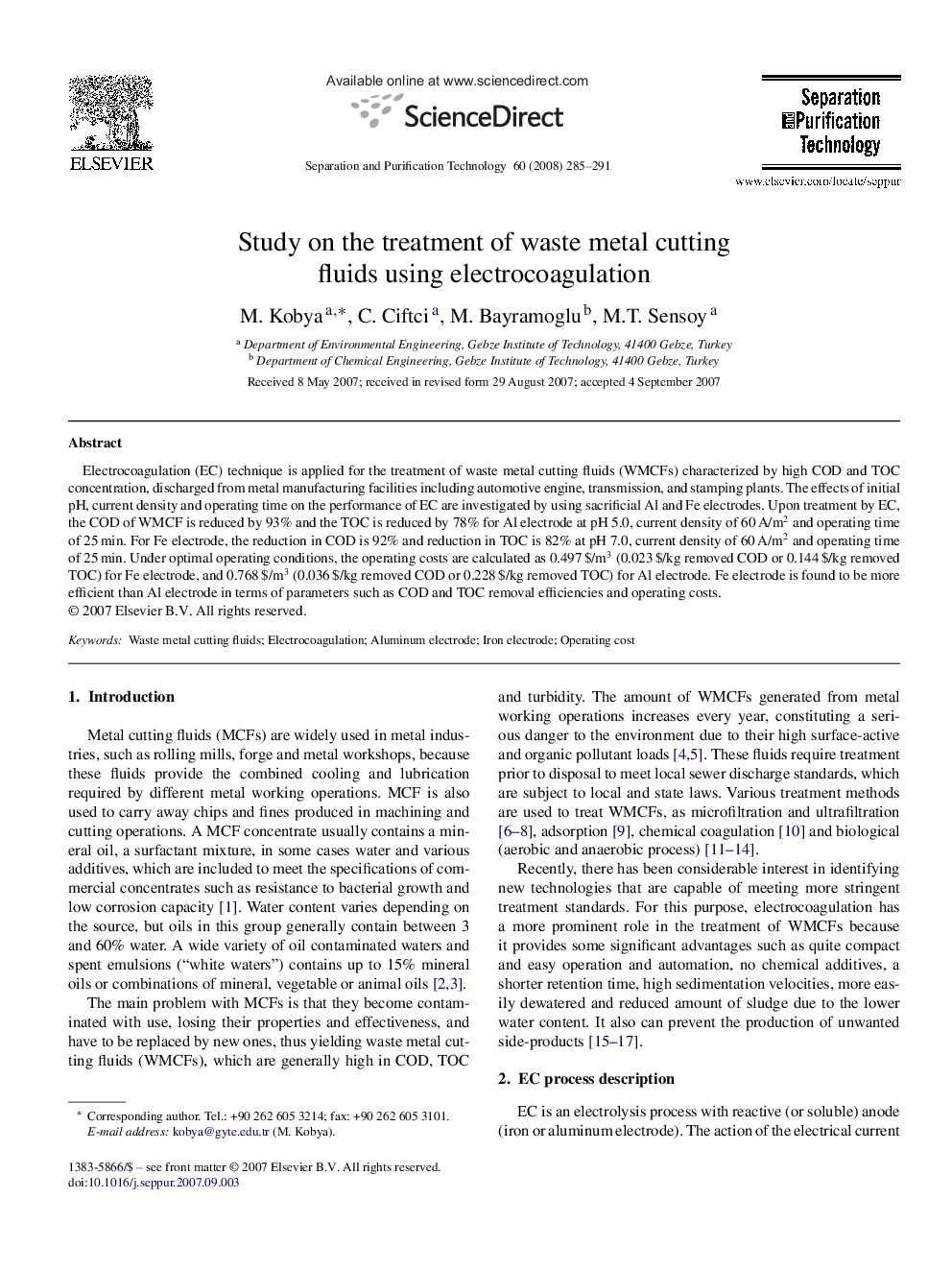| Article ID | Journal | Published Year | Pages | File Type |
|---|---|---|---|---|
| 643853 | Separation and Purification Technology | 2008 | 7 Pages |
Electrocoagulation (EC) technique is applied for the treatment of waste metal cutting fluids (WMCFs) characterized by high COD and TOC concentration, discharged from metal manufacturing facilities including automotive engine, transmission, and stamping plants. The effects of initial pH, current density and operating time on the performance of EC are investigated by using sacrificial Al and Fe electrodes. Upon treatment by EC, the COD of WMCF is reduced by 93% and the TOC is reduced by 78% for Al electrode at pH 5.0, current density of 60 A/m2 and operating time of 25 min. For Fe electrode, the reduction in COD is 92% and reduction in TOC is 82% at pH 7.0, current density of 60 A/m2 and operating time of 25 min. Under optimal operating conditions, the operating costs are calculated as 0.497 $/m3 (0.023 $/kg removed COD or 0.144 $/kg removed TOC) for Fe electrode, and 0.768 $/m3 (0.036 $/kg removed COD or 0.228 $/kg removed TOC) for Al electrode. Fe electrode is found to be more efficient than Al electrode in terms of parameters such as COD and TOC removal efficiencies and operating costs.
